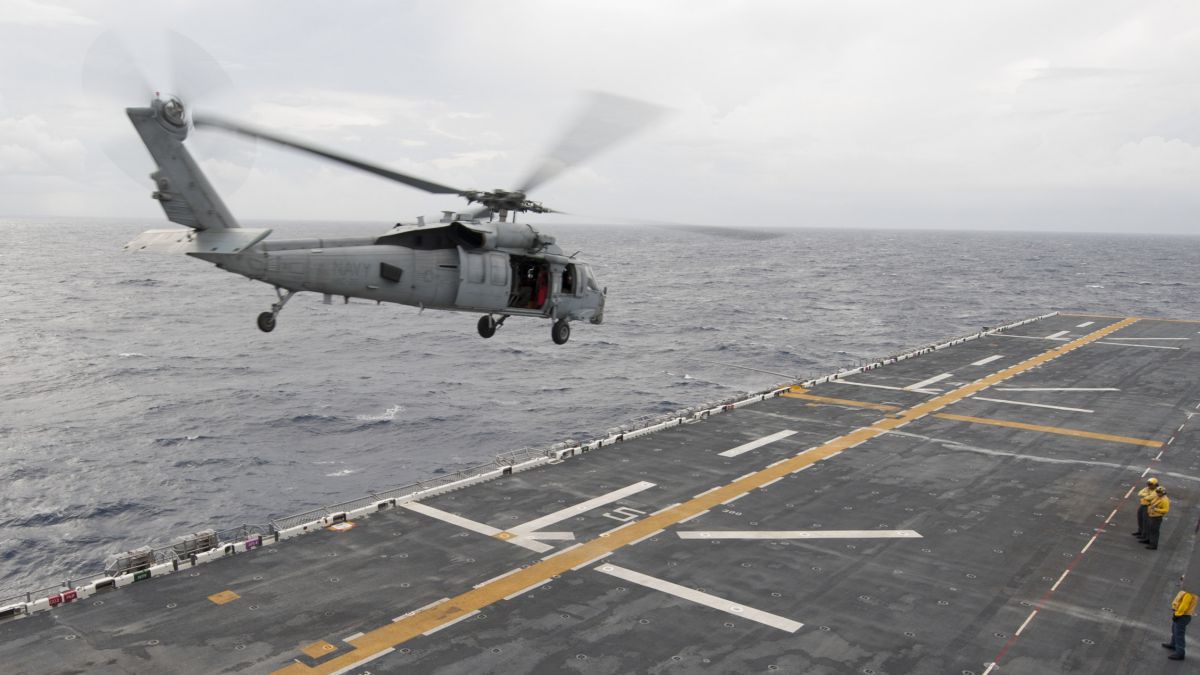U.S. Military Prepares for Response to Hurricane Irma

The U.S. Navy and the Coast Guard are moving rapidly to respond to Hurricane Irma as it sweeps towards Florida, and the military's rescue efforts have already begun in the eastern Caribbean.
The amphibious assault ships USS Wasp was the first Navy vessel to arrive in the U.S. Virgin Islands, which were hit hard by the storm, and she is providing medium and heavy lift helicopters to transport people and supplies. Wasp's helicopters are also carrying out medical evacuations for intensive care patients from St. Thomas to St. Croix and conducting site assessments on the initial damage in St. Thomas. Wasp was diverted from a voyage to Sasebo, Japan in order to assist with the relief effort.
Other Navy assets are nearby and prepared to assist. The amphibs USS Kearsarge and USS Oak Hill departed Norfolk on Aug. 31 to support relief efforts in the aftermath of Hurricane Harvey. However, without a formal request from Texas officials for assistance, they halted their voyage and are awaiting orders. The Navy says that they are well-positioned to support relief efforts in the aftermath of Hurricane Irma.
The aircraft on all three ships include three Marine Corps Huey helicopters, three Chinook heavy lift helicopters, five Osprey tiltrotors and nine Seahawk helicopters. Kearsarge and Oak Hill took on additional relief supplies in Norfolk before they sailed. In addition, the amphibs USS Iwo Jima and USS New York are in Norfolk and are taking on supplies in case more aid is needed.
Near Puerto Rico, the USCG has moved Coast Guard cutters just out of the storm's path, with a plan to return them rapidly to areas in need as soon as conditions allow. "You've got to be there big, and you've got to be there fast," said Vice Commandant Adm. Charles Michel at a defense conference in Washington on Wednesday. "That's what our plan is going to be for Puerto Rico, and that's what our plan is going to be for Florida as well."
Michel said that the Coast Guard is stretched thin after the high-tempo operations in Texas in the wake of Hurricane Harvey, when coastguardsmen operated around the clock and rescued an estimated 11,000 people. The service began moving helicopters last Friday to be ready for Irma, but leaders quietly acknowledged that the extended SAR effort would take a toll on equipment and aircrews. Coast Guard Air Station Houston is holding a safety stand-down and offering counseling to its servicemembers in the wake of the Harvey response. "[Harvey] was on such a large scale that probably everyone saw something that will impact them down the road,” said Cmdr. James Spittler, the air station's commander, speaking to the Washington Post.
The Air Force's SAR units are also recuperating and getting ready for the next storm: spokesman Col. Patrick Ryder said Tuesday that the service is already rotating out some of the aircrews that participated in the Harvey response. "Multiple Air Force search-and-rescue teams who were supporting Hurricane Harvey relief efforts have returned to their home stations to recover and prepare for a potential response to Hurricane Irma," he said.
In addition to the American response to Irma, the Netherlands and Britain are dispatching military assets to assist in the Caribbean. Two Dutch naval vessels are already in St. Martin, and two Dutch military aircraft are bringing in relief supplies. The Royal Navy is dispatching the helicopter carrier HMS Ocean and a detachment of troops to assist with relief in Anguilla, Montserrat and the British Virgin Islands.
